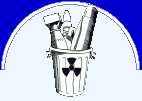


 |
 |  | ||||
|
|
|
|
| |||
| vous etes ici Homepage > News > External sources > Shultz, Other Experts Back Nuclear Disarmament | |
|
New Momentum for Nuclear Disarmament Shultz, Other Experts Back Nuclear Disarmament By Greg Webb Published 1 March 2008 Friday, February 29, 2008 OSLO, Norway - Former U.S. Secretary of State George Shultz today led a chorus of high-level experts supporting the eventual global elimination of nuclear weapons, adding momentum to a renewed international focus on the long-deferred goal of disarmament (see GSN, Jan. 23). “We are at a tipping point. The danger is all too real,” he told a conference hosted ! by Norway’s Foreign Ministry. “The simple continuation of present practice with regard to nuclear weapons is leading in the wrong direction. We need to change that direction.” Shultz’s tenure as secretary of state came during iconic Republican President Ronald Reagan’s eight-year administration. His support, along with fellow former Secretary of State Henry Kissinger, has given new credibility to the prospect of multilateral nuclear disarmament. The two Republicans have co-authored two Wall Street Journal commentaries in the past 14 months calling for steps that could lead to abandoning nuclear weapons. Joining Shultz and Kissinger for the commentaries were two influential Democratic policy leaders, former Defense Secretary William Perry and Nuclear Threat Initiative chief Sam Nunn (see GSN, Jan. 15, 2008 and Jan. 4, 2007). “So wake up, everybody. The danger is real and the potential consequences are of catastrophic proportions,” he added. Other high-level nuclear abolition advocates agreed. The sheer quantities of global nuclear weapons and materials increase risks of accidental use or theft by terrorists, he said. “Out of 27,000 [U.S. and Russian] warheads and many tons of highly enriched uranium and separated plutonium, what are the chances that some weapons or material might go astray? In the past year alone, we have heard alarming stories about aircraft armed with nuclear missiles going missing and of nuclear facilities and equipment protected by little more than bicycle locks,” ElBaradei said (see GSN, Feb. 13). Shultz and others said the elusive goal of total nuclear disarmament is a problem that can be solved with adequate attention from world leaders. “A sensible, practical, doable process exists to deal effectively with the problem,” he said. “Well, the problem is staggering, but practical doable identifiable steps can be taken that will put us on the road to success.” Participants today recommended a variety of such steps, such as: “The end point seems really quite unachievable and the challenges of getting there seem very daunting, but I haven’t heard any ridiculous ideas today. I’ve heard sensible pathways to elimination that one has to consider very carefully even if only to dismiss them,” said Jeffrey Lewis of the New America Foundation. “That’s very impressive. I think that’s a very different debate than we’ve had the past 20 years.” “Serious people, who are careful what they say in public so they don’t damage their reputation, have gathered at a very expensive hotel to hold a very serious discussion about eliminating nuclear weapons,” he added. One key hurdle to an eventual nuclear weapon ban could be the challenge of describing what elimination entails, that is, the question of to what degree nations would be required to dismantle nuclear weapons, destroy their components and eliminate weapon-grade uranium and plutonium. “I define a world without nuclear weapons as a world in which nuclear explosive devices are put on the museum shelf. No one makes them anymore, no one has them in their arsenal, no one includes them as weapons. Nuclear explosive devices are disassembled, their fissile pit that makes them up is melted down, destroyed,” said Richard Butler, former head of the U.N. Special Commission on Iraq and now leader of the Canberra Commission on the Elimination of Nuclear Weapons. Historian Richard Rhodes, conducting documentary interviews at the conference, was somewhat more specific. Other participants, however, said such specificity was unnecessary. “It doesn’t matter how it’s defined as long as all the major states have agreed on it,” said George Perkovich of the Carnegie Endowment for International Peace. “It’s not about absolute physical properties, it’s about relationships between states and the security that they have and they feel for each other.” “The point isn’t that any one answer is right or wrong, or worse or better. The point is that if all the states agree, then th! at’s the answer,” Perkovich added. “So now you’re looking for a new order that’s stable. And people are assuming that needs to be at zero [nuclear weapons]. Well, that could well be, because it’s equitable at zero. But as you get closer, you could decide that [low numbers] are stable. As long as people agree, then it’s stable.” Above all, progress must begin, ElBaradei stressed. “We must abandon the unworkable notion that it is morally reprehensible for some countries to pursue weapons of mass destruction, yet morally acceptable for others to rely on them for their security,” he said. “Ultimately, the prohibition of nuclear weapons should be a peremptory norm of international law, which is not treaty-dependent, similar to the prohibition of genocide, torture and slavery.”
|
Also in this section navigation motscles | ||||||||||||||||||||||||||||||||||||||||||||||||||||||||||||||||||||||
| visites : | 1273898 |
|
Site powered by SPIP
design et fonction Easter-Eggs |